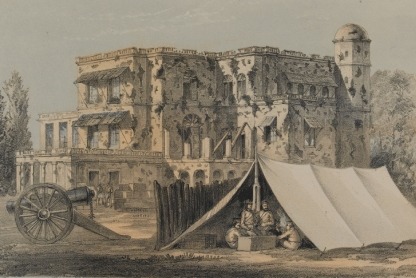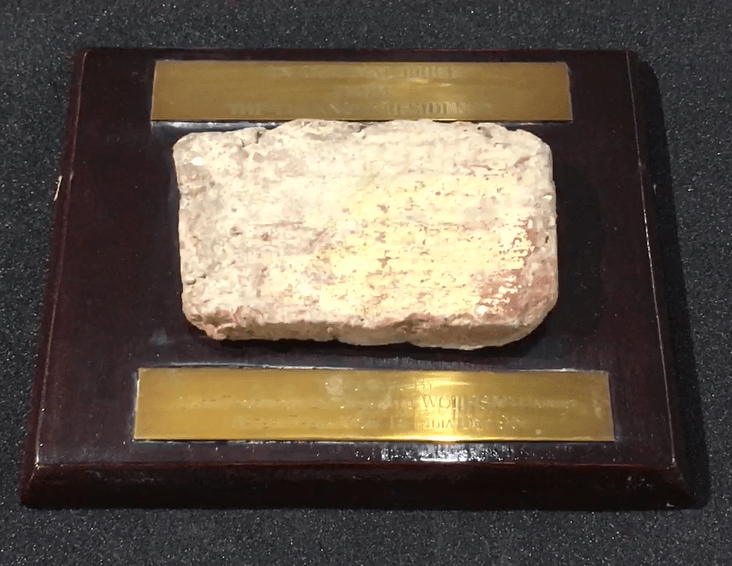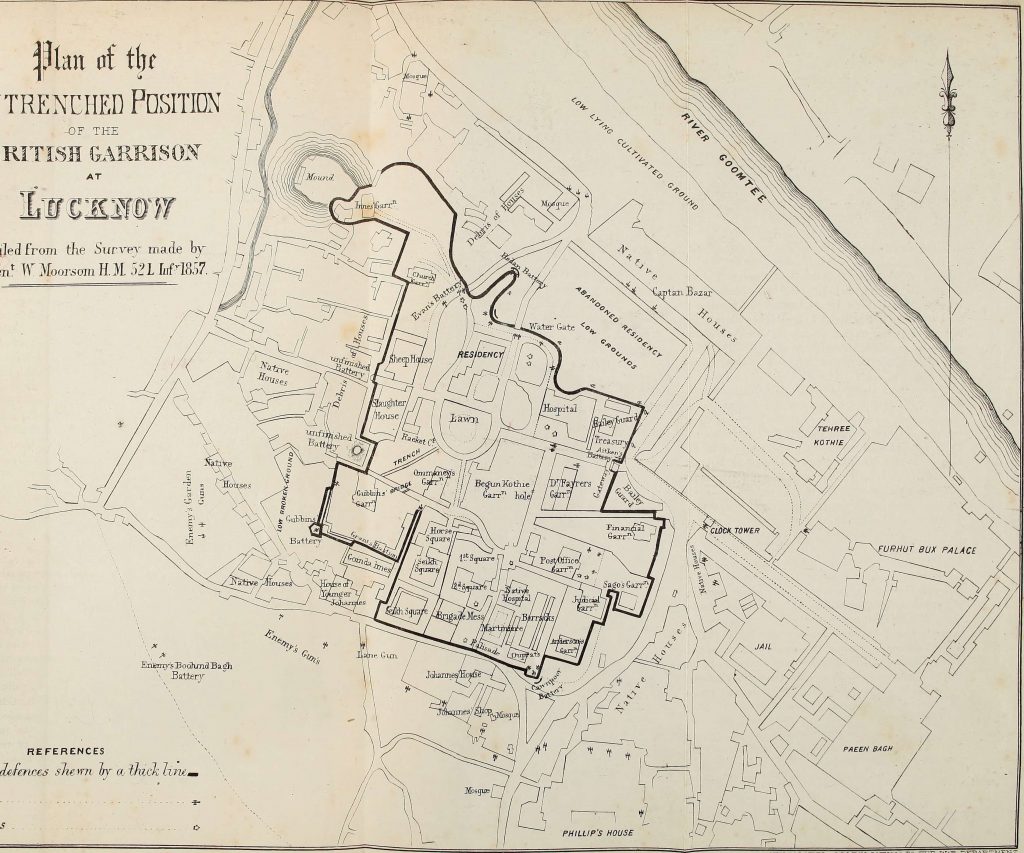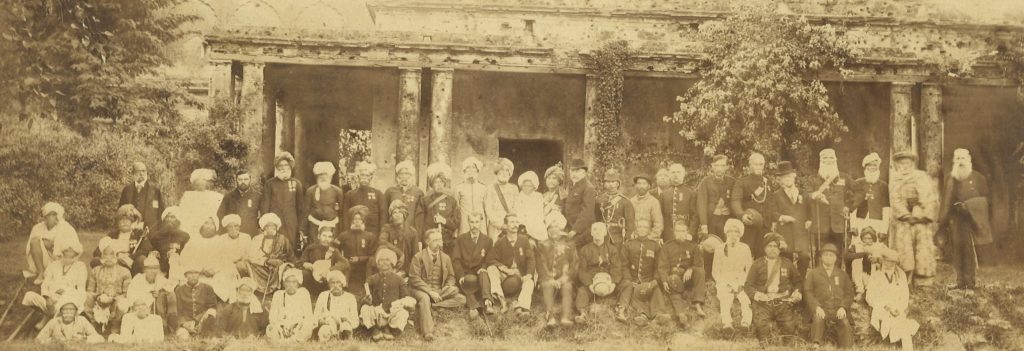On 30 May 1857, rebellion broke out in the city of Lucknow as Indian soldiers targeted British officers and set fire to their bungalows. In the chaos, many civilians fled to the centre of the city. They took refuge in and around the British Residency.

The Residency was a group of central administrative buildings that were originally built between 1775 and 1800 to house the British representative in the court of the Indian rulers (the Nawabs).

This brick was part of the British defences during the siege of Lucknow. It was taken from the Residency buildings in 1995 by two officers who turned it into a commemorative plaque.
Lucknow was not the first city to rebel which gave the British forces time to prepare for an attack. Sir Henry Lawrence, the local Chief Commissioner, had stocked the Residency with supplies. He also set up defences around the Residency and its surrounding buildings. This protection consisted of military camps, fortified buildings, four large battery guns and a network of land mines.

The 32nd Regiment of Foot played a major part in this defence. They were led by Brigadier John Inglis who took military command after Sir Lawrence was fatally wounded. In total, 855 British soldiers, 712 Indian soldiers, and 153 volunteers were defending 1,280 civilians. Outside Lucknow, a rebel force of almost 8,000 gathered to besiege the city.

The Begum of Oudh

At Bodmin Keep, we have a wax seal that belong to one of the leaders of the uprising of 1857, Begum Hazrat Mahal. Begum is a title for a female ruler and Hazrat Mahal gained this title through her marriage to Wajid Ali Shah, ruler of Lucknow and the surrounding region of Oudh. However, in 1856, the British had taken control of Oudh and exiled Wajid Ali Shah to Calcutta.
Hazrat Mahal wanted to secure the Lucknow title on behalf of her son, and so, during the uprising she organised a military force to reclaim Oudh. She raised funds, issued orders, and gave speeches to encourage the fight. Her men forced the British forces to retreat to the Lucknow Residency where they were held under siege for almost 5 months.

Wax seals, like the one in the museum, were applied to letters and other documents as marks of authority. The Begum’s seal is decorated with symbols that are similar to the coat of arms of Awadh: two winged mermaids stand either side of a figure riding a horse and holding a banner, possibly decorated with a fish.
The seal dates to the 1st of July 1858 by which time the British had recaptured the city of Lucknow. Begum Hazrat Mahal was forced to retreat to Nepal where she stayed until her death in 1879.
